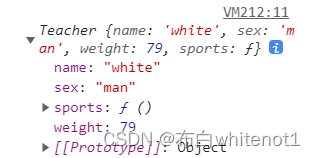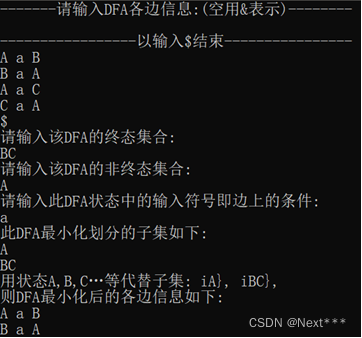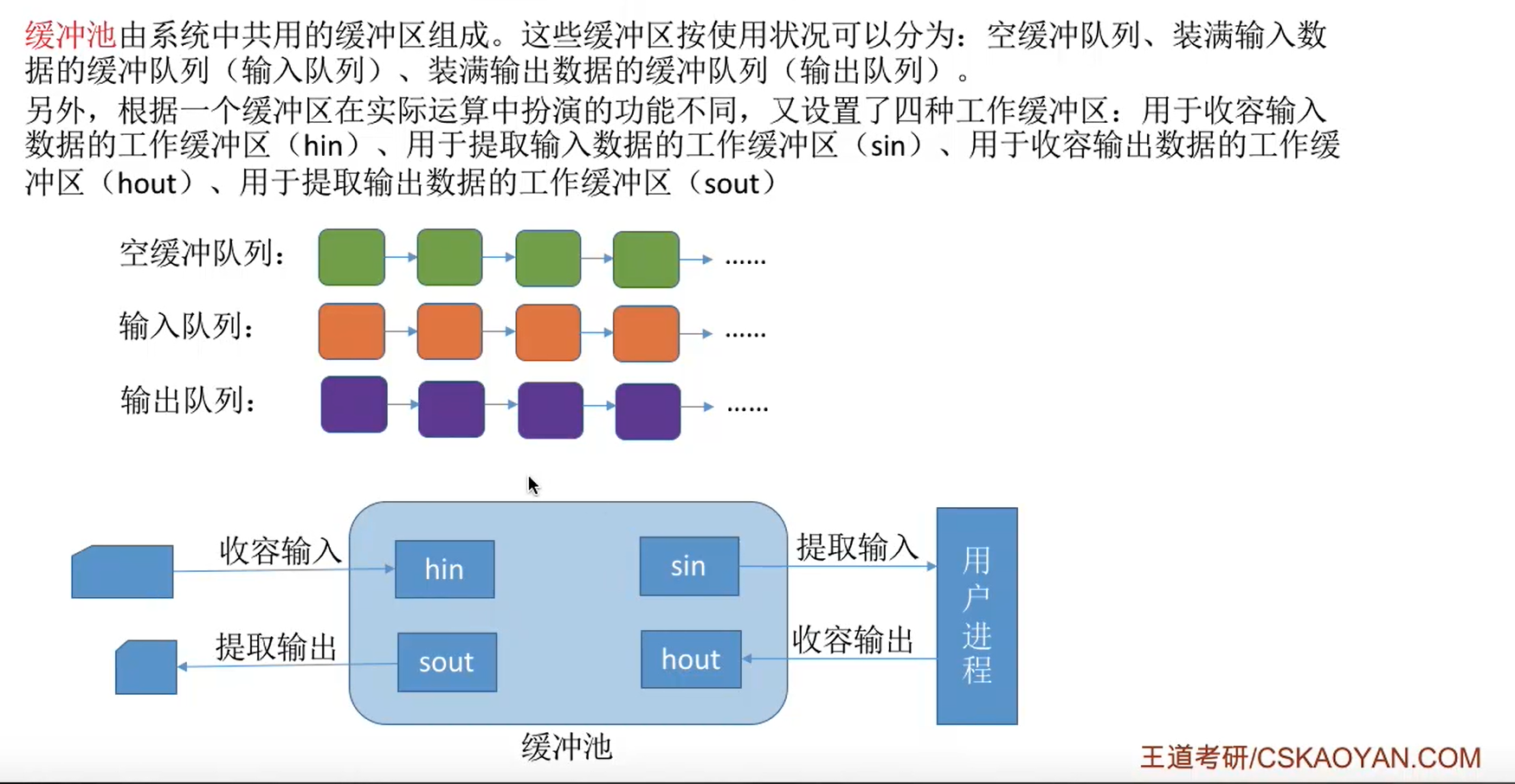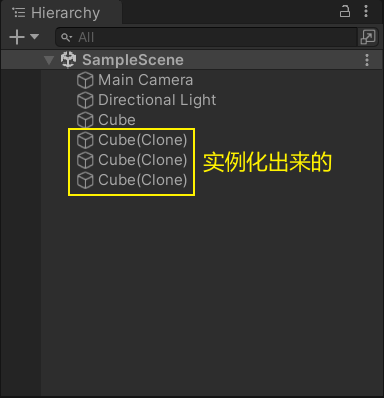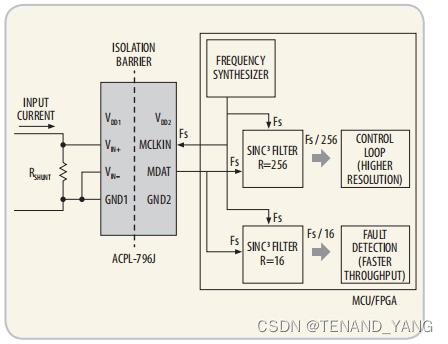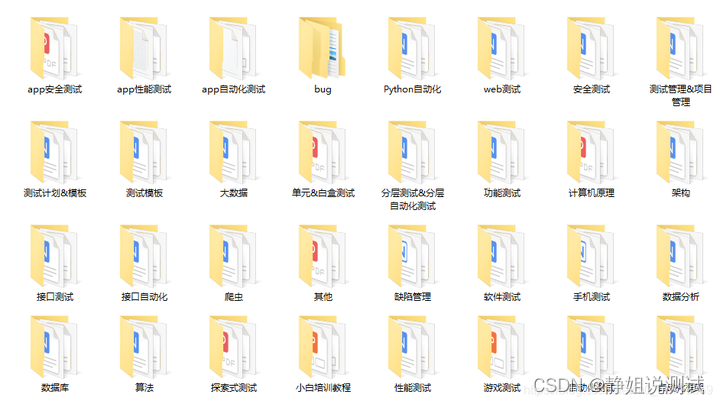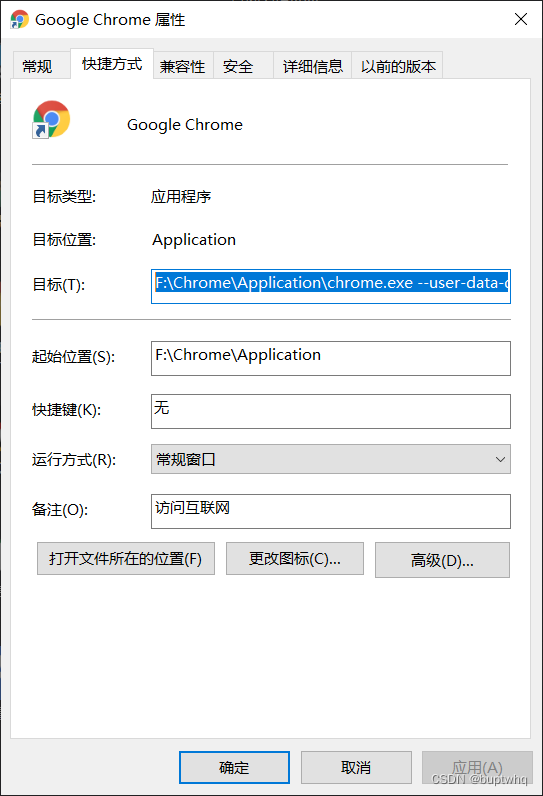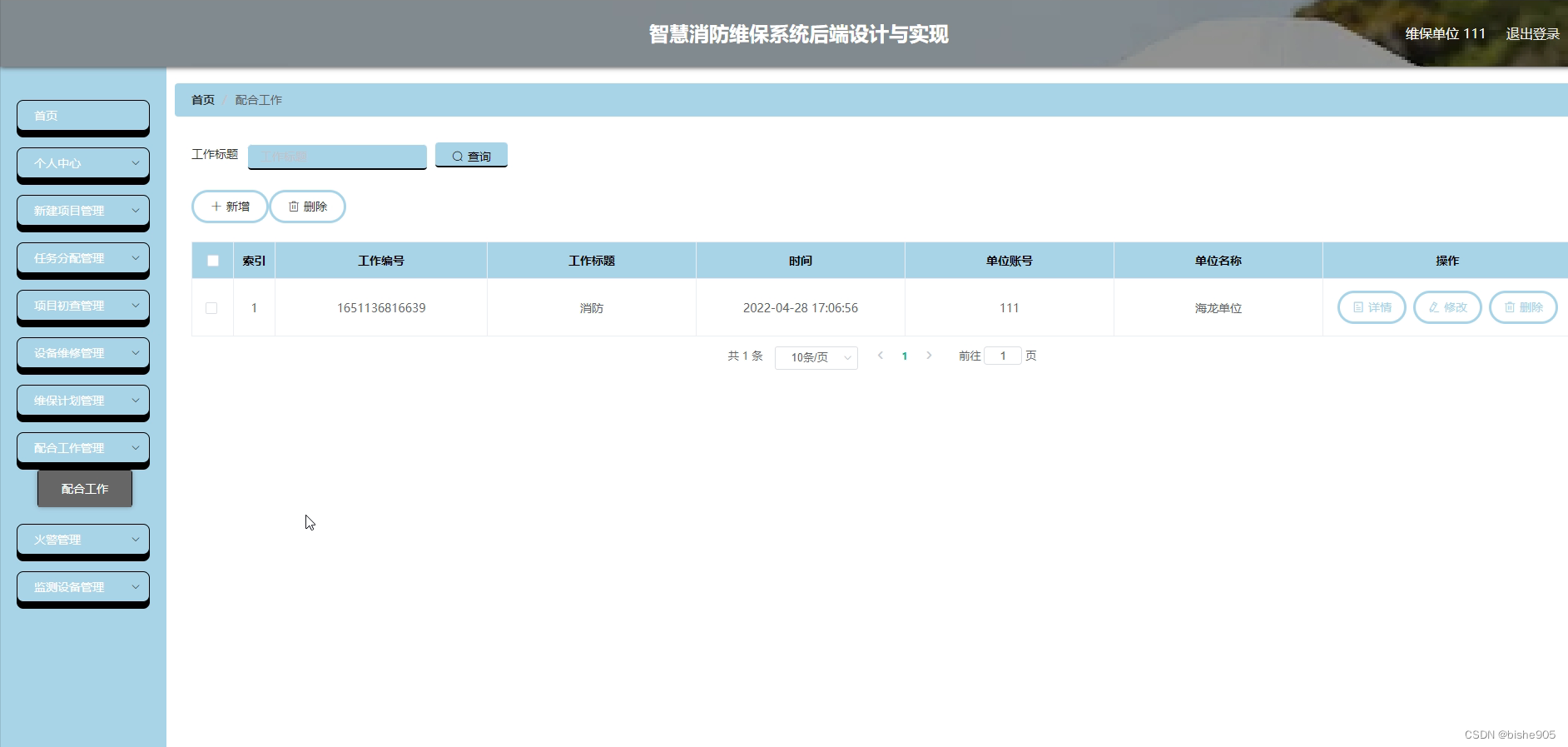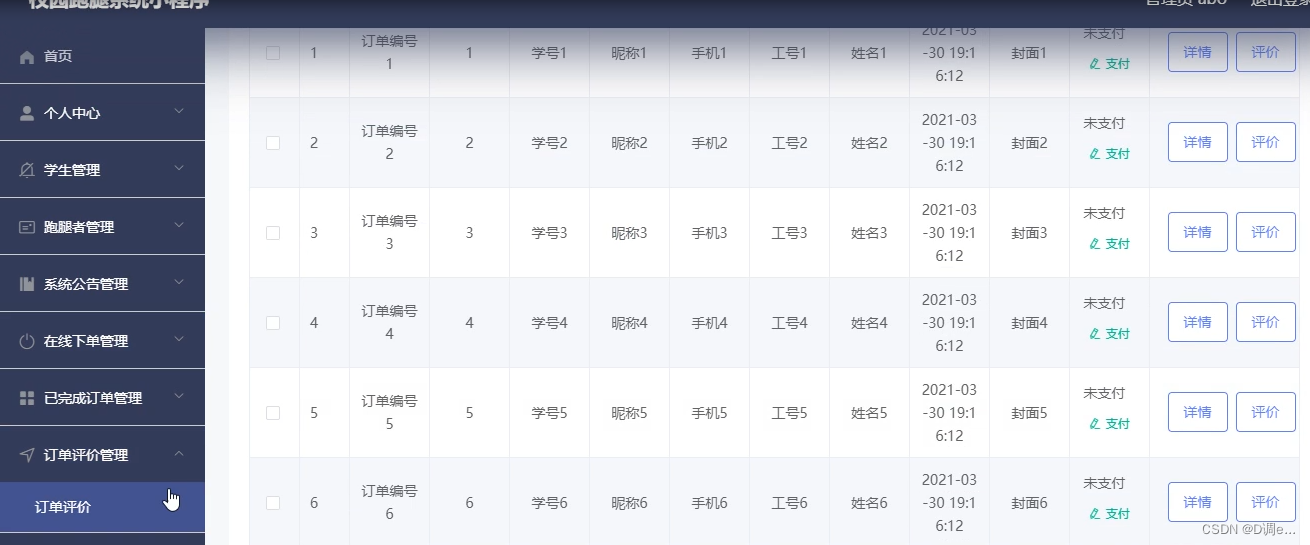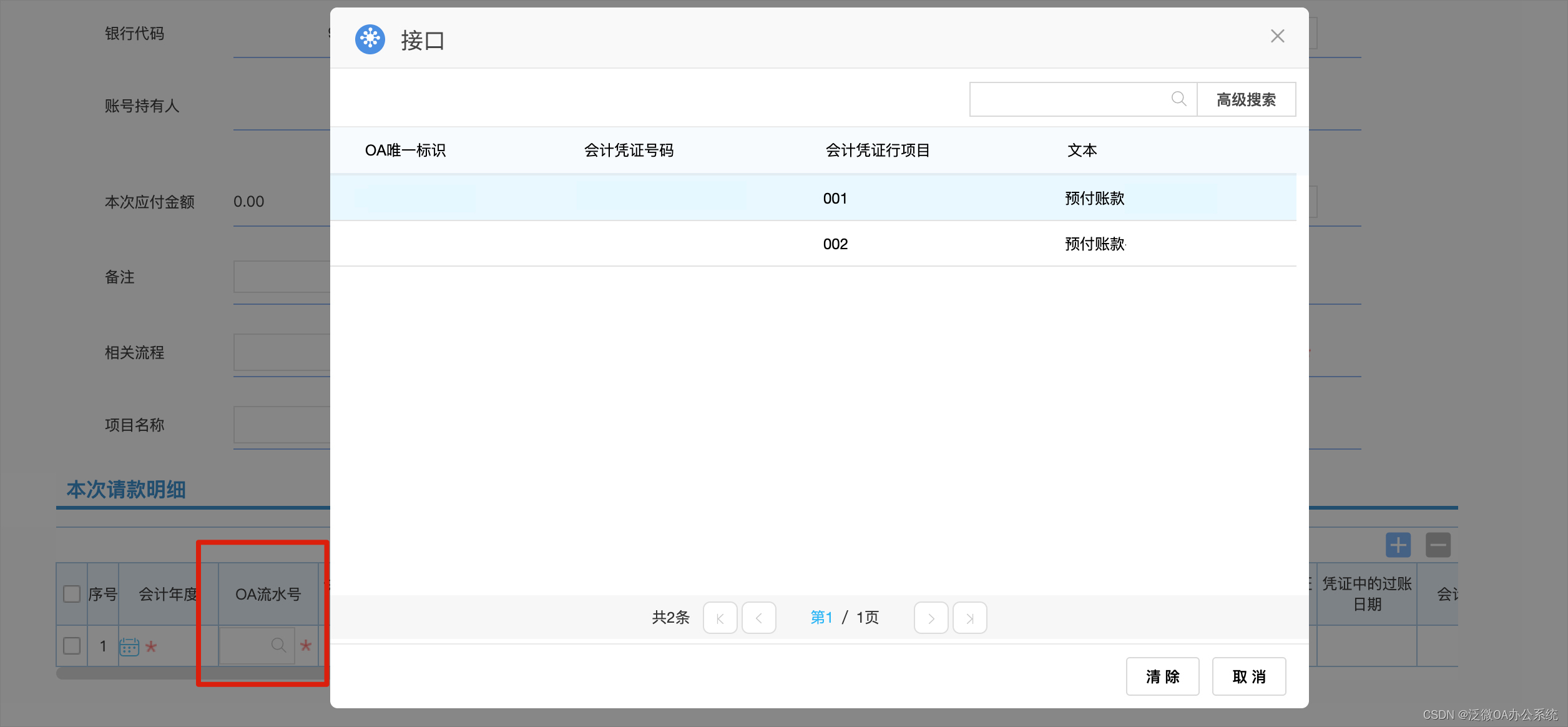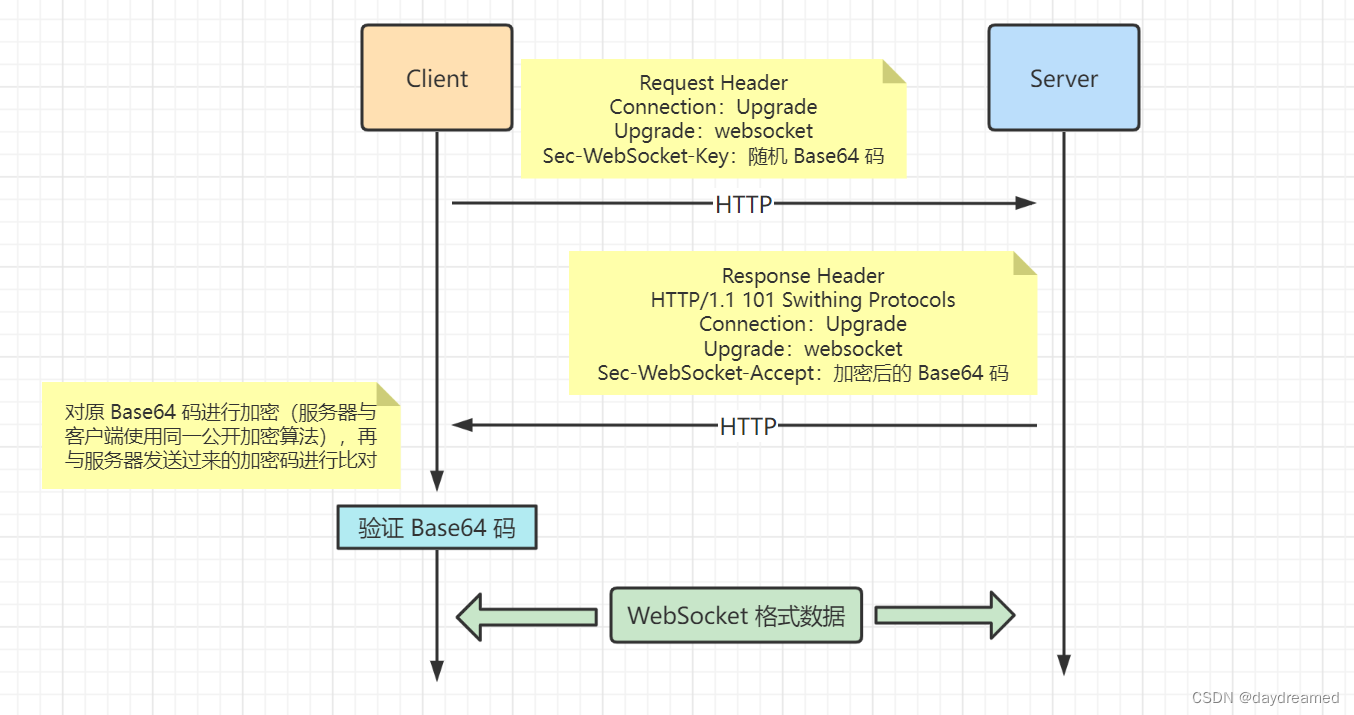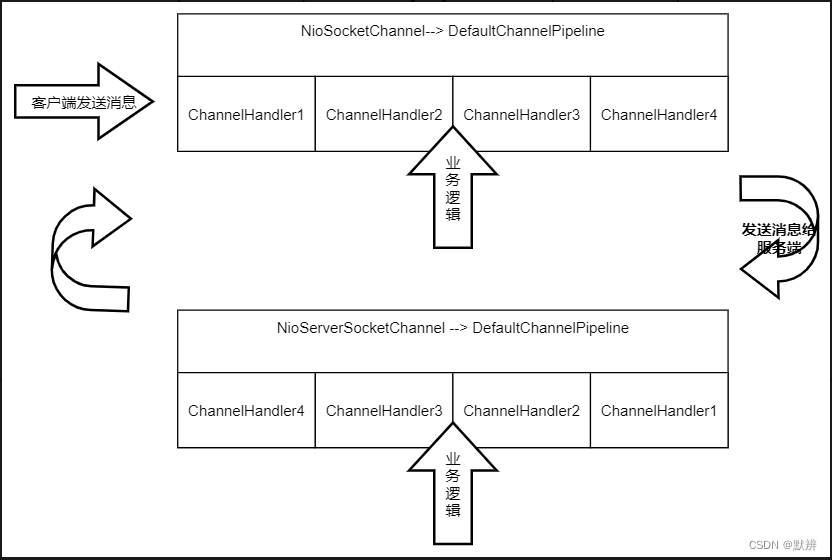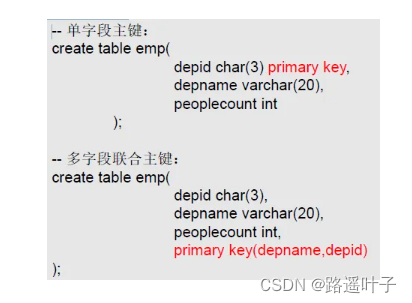文章目录
- 目标
- 设计思路
- 项目结构
- 一、实现
- 1、资源加载接口定义和实现
- 获取ClassPath下的文件信息
- 获取指定文件路径的方式读取文件信息
- 获取HTTP的方式读取云服务的文件
- 2、包装资源加载器定义和实现-策略模式的体现
- 包装资源加载器实现
- 3、Bean定义读取接口
- 4、Bean定义抽象类实现
- 5、解析XML处理Bean注册
- 二、测试
- 1、事先准备
- 2、配置文件
- 3、单元测试(资源加载)
- 4、单元测试(配置文件注册Bean)
- 总结
目标
这是现在的代码,可以看到步骤2、3、4都是通过手动加载的,在spring框架里,这些内容理应是在spring容器启动就加载到bean容器的,所以本章目标是通过资源加载Spring.xml解析和注册Bean对象。
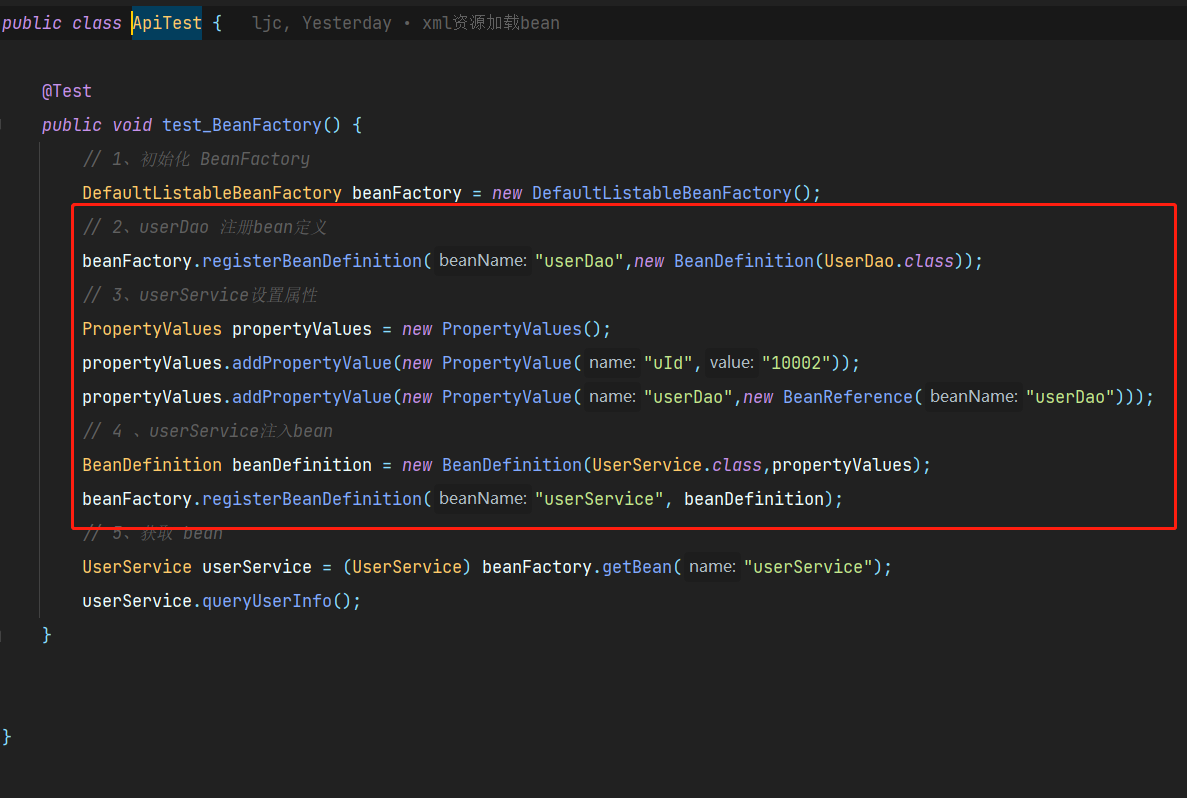
设计思路
依照本章节的需求背景,
1、我们需要在现有的 Spring 框架中添加一个资源解析器,也就是能读取classpath、本地文件和云文件的配置内容。
这些配置内容就是像使用 Spring 时配置的 Spring.xml 一样,里面会包括 Bean 对象的描述和属性信息。
2、在读取配置文件信息后,接下来就是对配置文件中的 Bean 描述信息解析后进行注册操作,把 Bean 对象注册到 Spring 容器中。
整体设计结构如下图:
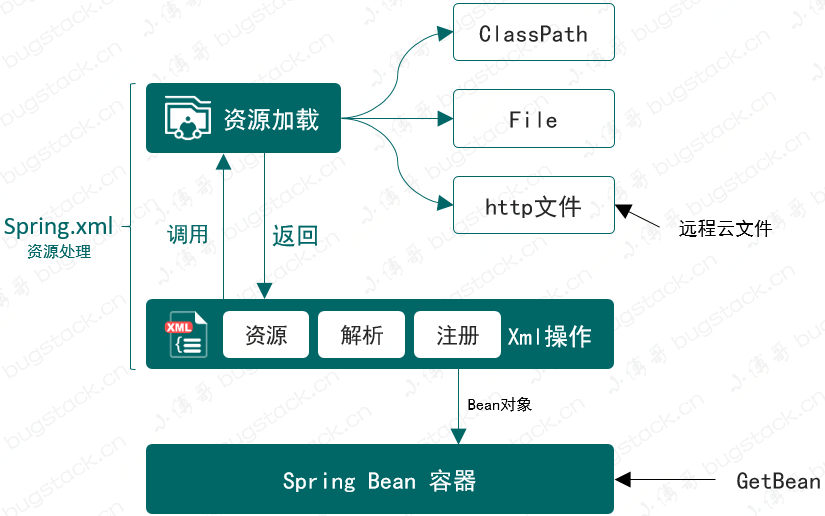
这里分3块内容
1、资源加载器的实现
2、加载资源到内存,然后进行xml的解析、注册BeanDefinition
3、创建bean
项目结构
黄色是新增,绿色是修改
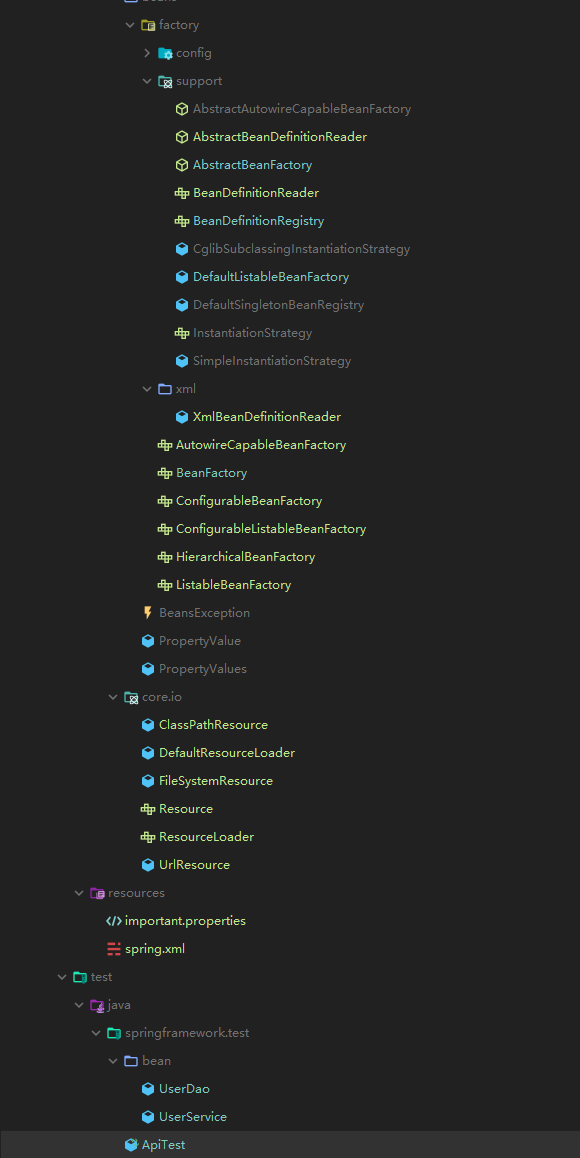
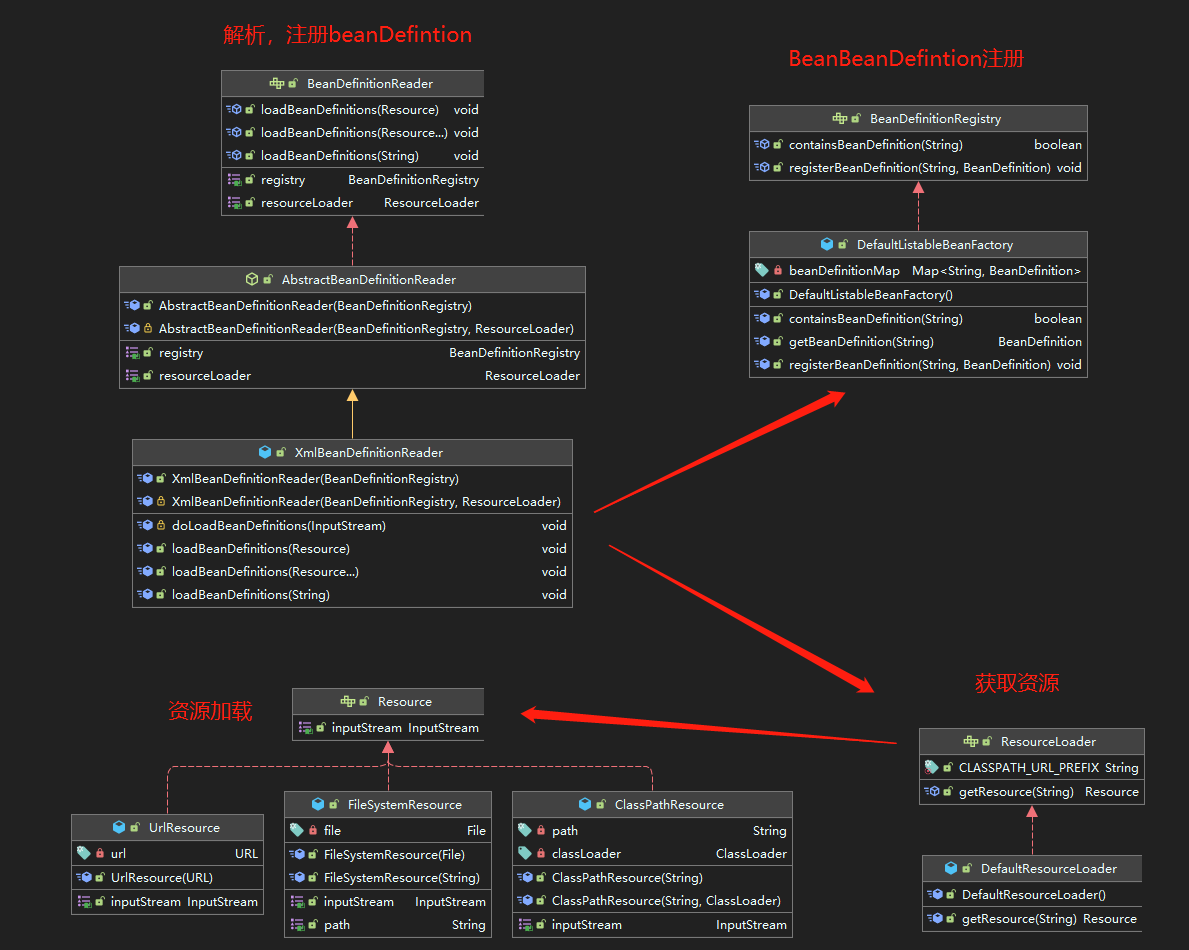
本章新增内容具体如下
1、BeanDefinitionReader接口,对资源的具体使用,将配置信息注册到 Spring 容器中去。
接口BeanDefinitionReader:负责定义行为
抽象类AbstractBeanDefinitionReader:处理**非接口功能外的注册Bean组件填充**
实现类:XmlBeanDefinitionReader:可只关心**具体的业务实现**
这三部分内容主要是合理清晰的处理了资源读取后的注册 Bean 容器操作。
2、Resource 的资源加载器的实现中包括了,ClassPath、系统文件、云配置文件,这三部分与 Spring 源码中的设计和实现保持一致,最终在 DefaultResourceLoader 中做具体的调用。
3、ResourceLoader获取资源
4、BeanDefintion注册
另外本章节还参考 Spring 源码,做了相应接口的集成和实现的关系,虽然这些接口目前还并没有太大的作用,但随着框架的逐步完善,它们也会发挥作用。如图 6-4

1、BeanFactory,已经存在的 Bean 工厂接口用于获取 Bean 对象,
这次新增加了按照类型获取 Bean 的方法: T getBean(String name, Class requiredType)
2、ListableBeanFactory,是一个扩展 Bean 工厂接口的接口,
新增加了 getBeansOfType、getBeanDefinitionNames() 方法,在 Spring 源码中还有其他扩展方法。
3、HierarchicalBeanFactory,在 Spring 源码中它提供了可以获取父类 BeanFactory 方法,属于是一种扩展工厂的层次子接口。
4、AutowireCapableBeanFactory,是一个自动化处理Bean工厂配置的接口,目前案例工程中还没有做相应的实现,后续逐步完善。
5、ConfigurableBeanFactory,可获取 BeanPostProcessor、BeanClassLoader等的一个配置化接口。
6、ConfigurableListableBeanFactory,提供分析和修改Bean以及预先实例化的操作接口,不过目前只有一个 getBeanDefinition 方法。
一、实现
1、资源加载接口定义和实现
public interface Resource {
InputStream getInputStream() throws IOException;
}
在 Spring 框架下创建 core.io 核心包,在这个包中主要用于处理资源加载流。
定义 Resource 接口,提供获取 InputStream 流的方法,接下来再分别实现三种不同的流文件操作:classPath、FileSystem、URL
获取ClassPath下的文件信息
/**
* 获取上下文文件信息(ClassPath下文件)
*/
public class ClassPathResource implements Resource {
private final String path;
private ClassLoader classLoader;
public ClassPathResource(String path) {
this(path, null);
}
public ClassPathResource(String path, ClassLoader classLoader) {
this.path = path;
this.classLoader = classLoader != null ? classLoader : ClassUtils.getDefaultClassLoader();
}
@Override
public InputStream getInputStream() throws IOException {
InputStream is = classLoader.getResourceAsStream(path);
if (is == null) {
throw new FileNotFoundException(this.path + " cannot be opened because it does not exist");
}
return is;
}
}
这一部分的实现是用于通过 ClassLoader 读取ClassPath 下的文件信息,具体的读取过程主要是:classLoader.getResourceAsStream(path)
获取指定文件路径的方式读取文件信息
/**
* 指定文件路径的方式读取文件信息
*/
public class FileSystemResource implements Resource {
private final String path;
private final File file;
public FileSystemResource(File file) {
this.path = file.getPath();
this.file = file;
}
public FileSystemResource(String path) {
this.file = new File(path);
this.path = file.getPath();
}
@Override
public InputStream getInputStream() throws IOException {
return new FileInputStream(this.file);
}
public String getPath() {
return path;
}
}
获取HTTP的方式读取云服务的文件
/**
* HTTP 的方式读取云服务的文件
*/
public class UrlResource implements Resource {
private final URL url;
public UrlResource(URL url) {
Assert.notNull(url,"URL must not be null");
this.url = url;
}
@Override
public InputStream getInputStream() throws IOException {
URLConnection con = this.url.openConnection();
try {
return con.getInputStream();
} catch (IOException e) {
if (con instanceof HttpURLConnection){
((HttpURLConnection) con).disconnect();
}
throw e;
}
}
}
2、包装资源加载器定义和实现-策略模式的体现
/**
* 包装资源加载器
*/
public interface ResourceLoader {
/**
* Pseudo URL prefix for loading from the class path: "classpath:"
*/
String CLASSPATH_URL_PREFIX="classpath:";
Resource getResource(String location);
}
按照资源加载的不同方式,资源加载器可以把这些方式集中到统一的类服务下进行处理,外部用户只需要传递资源地址即可,简化使
用。
PS:设计模式-策略模式的体现
包装资源加载器实现
/**
* 包装资源加载器实现
*/
public class DefaultResourceLoader implements ResourceLoader {
@Override
public Resource getResource(String location) {
Assert.notNull(location, "Location must not be null");
if (location.startsWith(CLASSPATH_URL_PREFIX)) {
return new ClassPathResource(location.substring(CLASSPATH_URL_PREFIX.length()));
}else{
try {
URL url = new URL(location);
return new UrlResource(url);
} catch (MalformedURLException e) {
return new FileSystemResource(location);
}
}
}
}
1、在获取资源的实现中,主要是把三种不同类型的资源处理方式进行了包装,分为:判断是否为ClassPath、URL以及文件。
2、虽然 DefaultResourceLoader 类实现的过程简单,但这也是设计模式约定的具体结果,像是这里不会让外部调用放知道过多的细节,而是仅关心具体调用结果即可。
3、Bean定义读取接口
/**
* Bean定义读取接口
*/
public interface BeanDefinitionReader {
BeanDefinitionRegistry getRegistry();
ResourceLoader getResourceLoader();
void loadBeanDefinitions(Resource resource) throws BeansException;
void loadBeanDefinitions(Resource... resources) throws BeansException;
void loadBeanDefinitions(String location) throws BeansException;
}
1、定义了几个方法,包括:getRegistry()、getResourceLoader(),以及三个加载Bean定义的方法。
2、这里需要注意 getRegistry()、getResourceLoader(),都是用于提供给后面三个方法的工具,加载和注册,这两个方法的实现会包装到抽象类中,以免污染具体的接口实现方法。
4、Bean定义抽象类实现
/**
* Bean定义抽象类实现
*/
public abstract class AbstractBeanDefinitionReader implements BeanDefinitionReader{
private final BeanDefinitionRegistry registry;
private ResourceLoader resourceLoader;
public AbstractBeanDefinitionReader(BeanDefinitionRegistry registry) {
this(registry,new DefaultResourceLoader());
}
protected AbstractBeanDefinitionReader(BeanDefinitionRegistry registry, ResourceLoader resourceLoader) {
this.registry = registry;
this.resourceLoader = resourceLoader;
}
@Override
public BeanDefinitionRegistry getRegistry() {
return registry;
}
@Override
public ResourceLoader getResourceLoader() {
return resourceLoader;
}
}
抽象类把 BeanDefinitionReader 接口的前两个方法全部实现完了,并提供了构造函数,让外部的调用使用方,把Bean定义注入类,传递进来。
5、解析XML处理Bean注册
/**
* 解析XML处理Bean注册
*/
public class XmlBeanDefinitionReader extends AbstractBeanDefinitionReader {
public XmlBeanDefinitionReader(BeanDefinitionRegistry registry) {
super(registry);
}
protected XmlBeanDefinitionReader(BeanDefinitionRegistry registry, ResourceLoader resourceLoader) {
super(registry, resourceLoader);
}
@Override
public void loadBeanDefinitions(Resource resource) throws BeansException {
try {
InputStream inputStream = resource.getInputStream();
doLoadBeanDefinitions(inputStream);
} catch (IOException | ClassNotFoundException e) {
throw new BeansException("IOException parsing XML document from " + resource, e);
}
}
@Override
public void loadBeanDefinitions(Resource... resources) throws BeansException {
for (Resource resource : resources) {
loadBeanDefinitions(resource);
}
}
@Override
public void loadBeanDefinitions(String location) throws BeansException {
ResourceLoader resourceLoader = getResourceLoader();
Resource resource = resourceLoader.getResource(location);
loadBeanDefinitions(resource);
}
protected void doLoadBeanDefinitions(InputStream inputStream) throws ClassNotFoundException {
Document doc = XmlUtil.readXML(inputStream);
Element root = doc.getDocumentElement();
NodeList childNodes = root.getChildNodes();
for (int i = 0; i < childNodes.getLength(); i++) {
// 判断元素
if (!(childNodes.item(i) instanceof Element)) continue;
// 判断对象
if (!"bean".equals(childNodes.item(i).getNodeName())) continue;
// 解析标签
Element bean = (Element) childNodes.item(i);
String id = bean.getAttribute("id");
String name = bean.getAttribute("name");
String className = bean.getAttribute("class");
// 获取 Class,方便获取类中的名称
Class<?> clazz = Class.forName(className);
// 优先级 id > name
String beanName = StrUtil.isNotEmpty(id) ? id : name;
if (StrUtil.isEmpty(beanName)) {
beanName = StrUtil.lowerFirst(clazz.getSimpleName());
}
// 定义Bean
BeanDefinition beanDefinition = new BeanDefinition(clazz);
// 读取属性并填充
for (int j = 0; j < bean.getChildNodes().getLength(); j++) {
if (!(bean.getChildNodes().item(j) instanceof Element)) continue;
if (!"property".equals(bean.getChildNodes().item(j).getNodeName())) continue;
// 解析标签:property
Element property = (Element) bean.getChildNodes().item(j);
String attrName = property.getAttribute("name");
String attrValue = property.getAttribute("value");
String attrRef = property.getAttribute("ref");
// 获取属性值:引入对象、值对象
Object value = StrUtil.isNotEmpty(attrRef) ? new BeanReference(attrRef) : attrValue;
// 创建属性信息
PropertyValue propertyValue = new PropertyValue(attrName, value);
beanDefinition.getPropertyValues().addPropertyValue(propertyValue);
}
if (getRegistry().containsBeanDefinition(beanName)) {
throw new BeansException("Duplicate beanName[" + beanName + "] is not allowed");
}
// 注册 BeanDefinition
getRegistry().registerBeanDefinition(beanName, beanDefinition);
}
}
}
XmlBeanDefinitionReader 类最核心的内容就是对 XML 文件的解析,把我们本来在代码中的操作放到了通过解析 XML 自动注册的方式。
1、loadBeanDefinitions 方法,处理资源加载
2、新增加了一个内部方法:doLoadBeanDefinitions,它主要负责解析 xml
3、在 doLoadBeanDefinitions 方法中,主要是对xml的读取 XmlUtil.readXML(inputStream) 和元素 Element 解析。
在解析的过程中通过循环操作,以此获取 Bean 配置以及配置中的 id、name、class、value、ref 信息。
4、最终把读取出来的配置信息,创建成 BeanDefinition 以及 PropertyValue,最终把完整的 Bean 定义内容注册到 Bean 容器:getRegistry().registerBeanDefinition(beanName, beanDefinition)·
二、测试
1、事先准备
public class UserDao {
private static Map<String, String> hashMap = new HashMap<>();
static {
hashMap.put("10001", "ljc");
hashMap.put("10002", "yaya");
hashMap.put("10003", "zz");
}
public String queryUserName(String uId) {
return hashMap.get(uId);
}
}
public class UserService {
private String uId;
private UserDao userDao;
public String queryUserInfo() {
return userDao.queryUserName(uId);
}
public String getuId() {
return uId;
}
public void setuId(String uId) {
this.uId = uId;
}
public UserDao getUserDao() {
return userDao;
}
public void setUserDao(UserDao userDao) {
this.userDao = userDao;
}
}
Dao、Service,是我们平常开发经常使用的场景。在 UserService 中注入 UserDao,这样就能体现出Bean属性的依赖了。
]
2、配置文件
important.properties
# Config File
system.key=OLpj9823dZ
spring.xml
<?xml version="1.0" encoding="UTF-8"?>
<beans>
<bean id="userDao" class="springframework.test.bean.UserDao"/>
<bean id="userService" class="springframework.test.bean.UserService">
<property name="uId" value="10001"/>
<property name="userDao" ref="userDao"/>
</bean>
</beans>
这里有两份配置文件,一份用于测试资源加载器,另外 spring.xml 用于测试整体的 Bean 注册功能。
3、单元测试(资源加载)
private DefaultResourceLoader resourceLoader;
@Before
public void init() {
resourceLoader = new DefaultResourceLoader();
}
@Test
public void test_classpath() throws IOException {
Resource resource = resourceLoader.getResource("classpath:important.properties");
InputStream inputStream = resource.getInputStream();
String content = IoUtil.readUtf8(inputStream);
System.out.println(content);
}
@Test
public void test_file() throws IOException {
Resource resource = resourceLoader.getResource("src/test/resources/important.properties");
InputStream inputStream = resource.getInputStream();
String content = IoUtil.readUtf8(inputStream);
System.out.println(content);
}
@Test
public void test_url() throws IOException {
// 网络原因可能导致GitHub不能读取,可以放到自己的Gitee仓库。读取后可以从内容中搜索关键字;OLpj9823dZ
Resource resource = resourceLoader.getResource("https://github.com/fuzhengwei/small-spring/blob/main/important.properties")
InputStream inputStream = resource.getInputStream();
String content = IoUtil.readUtf8(inputStream);
System.out.println(content);
}
测试结果
# Config File
system.key=OLpj9823dZ
Process finished with exit code 0
4、单元测试(配置文件注册Bean)
@Test
public void test_xml() {
// 1.初始化 BeanFactory
DefaultListableBeanFactory beanFactory = new DefaultListableBeanFactory();
// 2. 读取配置文件&解析xml&注册Bean
XmlBeanDefinitionReader reader = new XmlBeanDefinitionReader(beanFactory);
reader.loadBeanDefinitions("classpath:spring.xml");
// 3. 获取Bean对象调用方法
UserService userService = beanFactory.getBean("userService", UserService.class);
String result = userService.queryUserInfo();
System.out.println("测试结果:" + result);
}
测试结果
测试结果:ljc
Process finished with exit code 0
我们把以前通过手动注册 Bean 以及配置属性信息的内容**,交给了 new XmlBeanDefinitionReader(beanFactory) 类读取 Spring.xml 的方式来处理**,并通过了测试验证
总结
资源加载、获取-策略模式的体现
本篇以配置文件为入口解析和注册 Bean 信息,最终再通过 Bean 工厂获取 Bean 以及做相应的调用操作。
案例中每一个步骤的实现,这里都是参照 Spring 源码的接口定义、抽象类实现、名称规范、代码结构等,做相应的简化处理。
方便在学习的过程中也可以通过类名或者接口和整个结构体学习 Spring 源码,这样学习起来就容易多了。
![[激光原理与应用-53]:《激光焊接质量实时监测系统研究》-4-激光焊接系统软件设计](https://img-blog.csdnimg.cn/61218c58769a4948be184f50b294810f.png)

